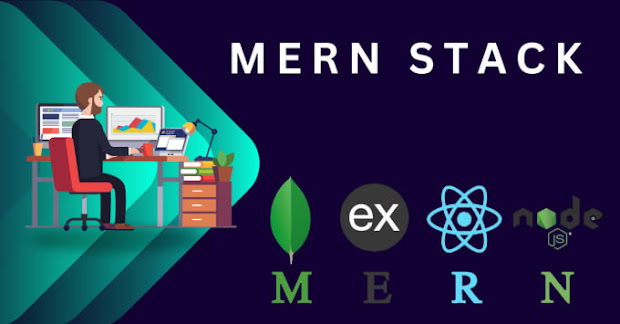A Comprehensive Guide on How to Become a MEAN Stack Developer
**Introduction:**
In the dynamic world of web development, MEAN stack has emerged as a powerful and versatile technology stack. Consisting of MongoDB, Express.js, Angular, and Node.js, MEAN offers a full-stack solution for building modern web applications. Whether you're a beginner or an experienced developer looking to expand your skill set, this guide will walk you through the step-by-step process of becoming a proficient MEAN stack developer.
**Table of Contents:**
1. **Understanding the MEAN Stack**
- What is the MEAN Stack?
- Overview of MongoDB, Express.js, Angular, and Node.js
- Advantages of Using the MEAN Stack
2. **Prerequisites for Becoming a MEAN Stack Developer**
- Fundamentals of HTML, CSS, and JavaScript
- Basic Knowledge of Backend and Databases
- Familiarity with Command Line and Version Control
3. **Mastering MongoDB**
- Introduction to MongoDB
- Installation and Setup
- CRUD Operations (Create, Read, Update, Delete)
- Working with Collections and Documents
- Building Schemas and Models
4. **Exploring Express.js**
- Introduction to Express.js
- Setting Up an Express Application
- Routing and Middleware
- Handling Requests and Responses
- Integrating with MongoDB using Mongoose
5. **Building Dynamic Frontends with Angular**
- Introduction to Angular
- Setting Up an Angular Project
- Components, Templates, and Data Binding
- Services and Dependency Injection
- Routing and Navigation
- Handling Forms and User Input
- Making HTTP Requests
6. **Creating Server-Side Logic with Node.js**
- Introduction to Node.js
- Setting Up Node.js Environment
- Handling Asynchronous Operations
- Building RESTful APIs
- Integrating Express.js and MongoDB
- Error Handling and Debugging
7. **Putting It All Together: Developing a MEAN Stack Application**
- Planning Your Application
- Creating the Backend with Express.js and Node.js
- Designing the Frontend with Angular
- Connecting Frontend and Backend
- Testing and Debugging the Application
8. **Advanced Concepts and Best Practices**
- User Authentication and Authorization
- Real-Time Web Applications with WebSockets
- Performance Optimization Techniques
- Deployment Strategies for MEAN Applications
- Security Best Practices
9. **Learning Resources and Further Development**
- Online Courses and Tutorials
- Books and Documentation
- Open Source Projects for Practice
- Participating in Developer Communities
- Continuous Learning and Keeping Up with Updates
**Conclusion:**
Becoming a proficient MEAN stack developer requires dedication, practice, and continuous learning. By mastering each component of the MEAN stack and understanding how they work together, you'll be well-equipped to build robust and modern web applications. Whether you're aiming for a career change or seeking to enhance your existing skills, this comprehensive guide has provided you with the roadmap to embark on your journey to becoming a successful MEAN stack developer. Start your learning process today and unlock a world of opportunities in the ever-evolving field of web development.
What is the MEAN Stack?
The MEAN stack is a collection of open-source JavaScript technologies used for building dynamic web applications. The acronym "MEAN" stands for four key components of this stack: MongoDB, Express.js, Angular, and Node.js. Each of these technologies serves a specific purpose in the development process, and when combined, they provide a comprehensive solution for both frontend and backend development.
Let's take a closer look at each component of the MEAN stack:
1. **MongoDB:** MongoDB is a NoSQL database that stores data in a flexible, JSON-like format known as BSON (Binary JSON). It is designed to handle large amounts of unstructured or semi-structured data. MongoDB's schema-less nature allows for more agile development, as data can be easily modified without strict adherence to a predefined schema.
2. **Express.js:** Express.js is a minimal and flexible web application framework for Node.js. It provides a set of features for building web and mobile applications, such as routing, middleware, and handling HTTP requests and responses. Express.js simplifies the process of building APIs and handling backend logic, making it an integral part of the MEAN stack.
3. **Angular:** Angular is a powerful frontend framework developed by Google. It enables the creation of dynamic, single-page applications (SPAs) with a focus on modular, reusable components. Angular provides features like data binding, dependency injection, and routing, which simplify frontend development and enhance user experience.
4. **Node.js:** Node.js is a runtime environment that allows developers to execute JavaScript code outside of a web browser. It is built on the V8 JavaScript engine and is known for its asynchronous, non-blocking I/O model. Node.js enables server-side JavaScript development and is used to create scalable, high-performance backend applications.
**Advantages of the MEAN Stack:**
1. **Single Language:** The MEAN stack allows developers to use JavaScript for both frontend and backend development, eliminating the need to learn multiple programming languages.
2. **Isomorphic Code:** JavaScript code written for both frontend and backend can be shared, which promotes code reusability and reduces development time.
3. **Real-time Applications:** The stack's components, particularly Node.js and MongoDB, are well-suited for building real-time applications and handling concurrent connections efficiently.
4. **Full-stack Solution:** The MEAN stack provides a complete solution for building modern web applications, from data storage and backend logic to frontend user interfaces.
5. **Scalability:** The combination of Node.js and MongoDB's non-blocking architecture allows for the creation of highly scalable applications that can handle a large number of concurrent users.
6. **Active Community:** Each component of the MEAN stack has a strong community of developers, resulting in extensive documentation, tutorials, and third-party libraries.
In summary, the MEAN stack offers a cohesive set of technologies for building efficient and feature-rich web applications. Its emphasis on JavaScript for both frontend and backend development, along with its ability to handle real-time scenarios and scalability, has made it a popular choice among developers.
Before diving into becoming a proficient MEAN stack developer, it's important to have a solid foundation in several key areas of web development. Here are the prerequisites you should consider:
1. **Fundamentals of HTML, CSS, and JavaScript:**
- **HTML (HyperText Markup Language):** Understanding the structure of web pages, creating elements, and using semantic HTML tags.
- **CSS (Cascading Style Sheets):** Styling web pages, working with selectors, creating layouts, and understanding responsive design.
- **JavaScript:** Mastering the basics of JavaScript programming, including variables, data types, functions, loops, and conditional statements. This is crucial, as JavaScript is the core language for both frontend and backend development in the MEAN stack.
2. **Basic Knowledge of Backend and Databases:**
- Familiarity with backend concepts, including server-side programming and handling HTTP requests and responses.
- Understanding databases and data modeling. While MEAN uses MongoDB as its database, having a general understanding of relational and NoSQL databases can be beneficial.
3. **Familiarity with Command Line and Version Control:**
- Proficiency in using the command line interface (CLI) for tasks such as navigating file systems, running scripts, and managing dependencies.
- Understanding version control systems like Git and platforms like GitHub. Version control is crucial for collaborative development and tracking changes to your codebase.
4. **Basic Understanding of JavaScript Frameworks and Libraries:**
- Familiarity with JavaScript frameworks and libraries, even at a high level, can help you grasp the concepts in the MEAN stack more easily. For example, knowledge of how frontend frameworks like React or Vue.js work can be beneficial when learning Angular.
5. **Learning Attitude and Problem-Solving Skills:**
- Web development is a continuous learning process. Having a growth mindset and a willingness to learn new concepts and technologies is essential.
- Strong problem-solving skills are crucial, as you'll often encounter challenges and bugs while developing applications.
6. **Node.js Basics:**
- While not a strict prerequisite, having some familiarity with Node.js will give you a head start in understanding the backend component of the MEAN stack. You can learn about setting up a Node.js environment, using npm (Node Package Manager), and writing basic server-side code.
7. **Database Concepts:**
- Understanding basic database concepts, such as data structures, querying, and CRUD (Create, Read, Update, Delete) operations, will help you when working with MongoDB.
Remember that learning the MEAN stack is a journey that requires dedication and practice. If you're missing some of these prerequisites, consider starting with beginner-level resources to fill in any gaps before jumping into MEAN stack development. As you progress, you'll find that these foundational skills will greatly enhance your ability to master the MEAN stack technologies.

















